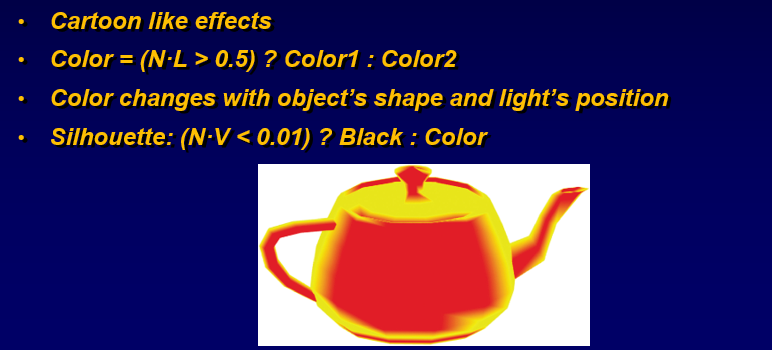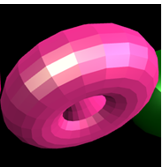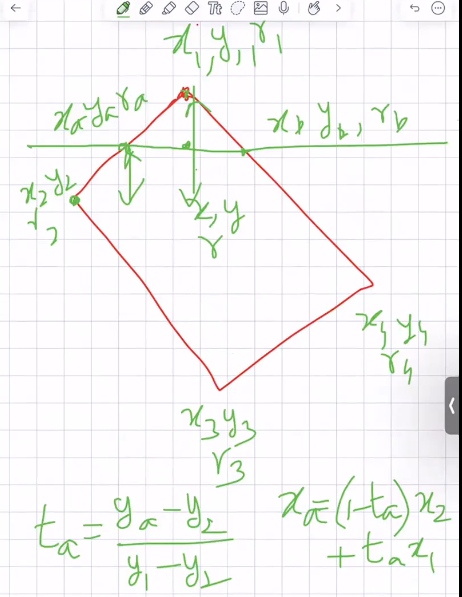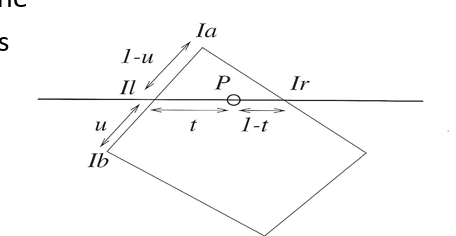12 - Color Shading
ucla | CS 174A | 2024-03-19 01:22
Table of Contents
Flat Shading
- apply same color across a tesselated polygonal surface of an object
- i.e., N is constant across the polygon/face
- if L far enough,
- similar for viewpoint -> shading is bad
Gouraud Smooth Shading
- intensity/color interpolation shading
- in WS: find I (intensity/color) at each vertex and illuminate vertices (normals)
- in SS: interpolate across the polygon face using vertex normals
- store normals along with vertices of the object faces
Limitations
- thin polygons not great for interp
- rotating polygons -> see a polygon outline
- specular reflection with larg polys at center and vertex
- mach banding not eliminated (sharp color transitions of shades of the same color)
Barycentric Interpolation
- interpolate with percentages so points closer to one endpoint of a segment are more of the color we want
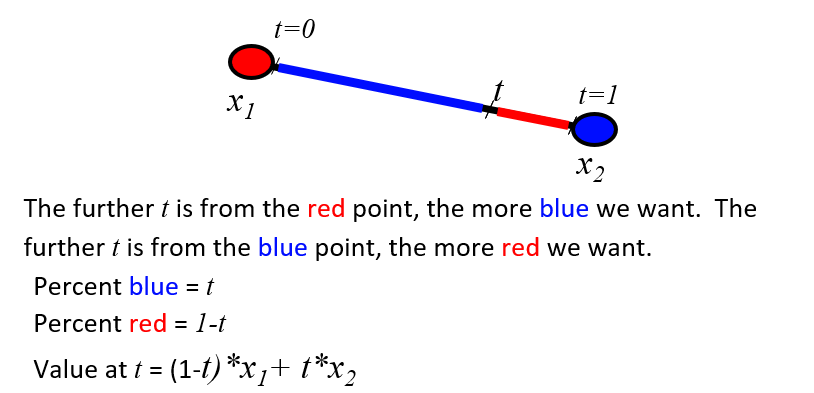
- use with bilinear interpolation
Bilinear interp
- interp across 2 edges
- usually along scanline and intersecting lines
- do using collinearity with closest poly vertices
- e.g., LOOOK
- given
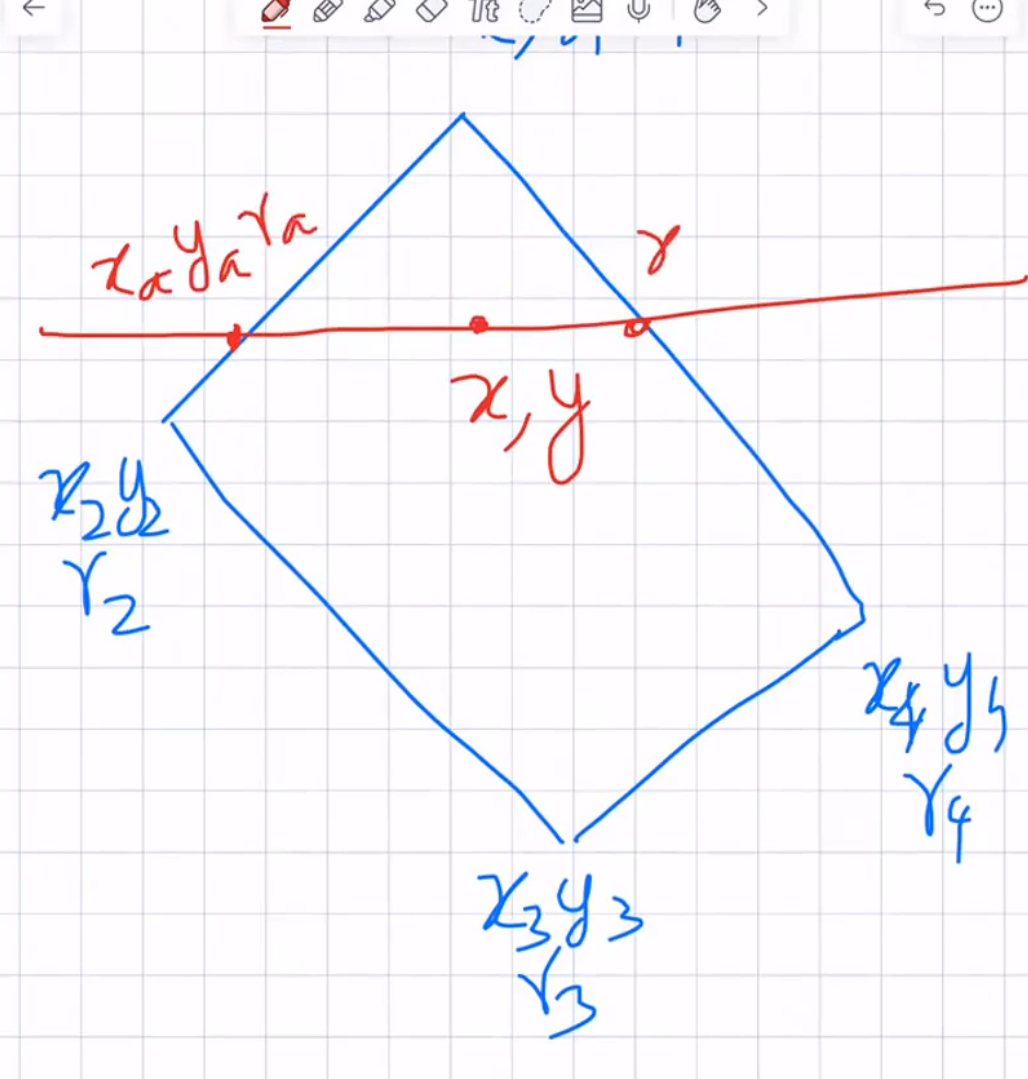
- find scan line interps:
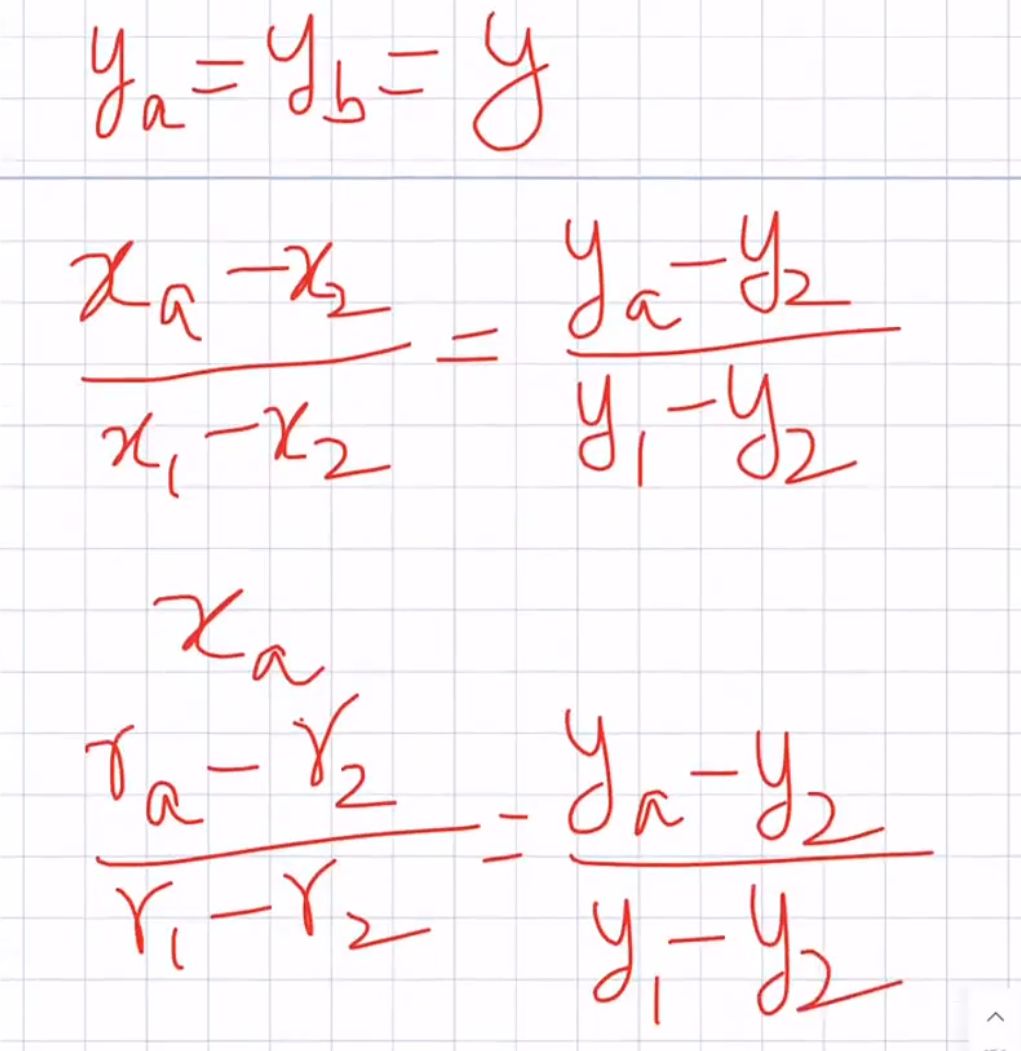
- find bilinear interps from scanline interps:
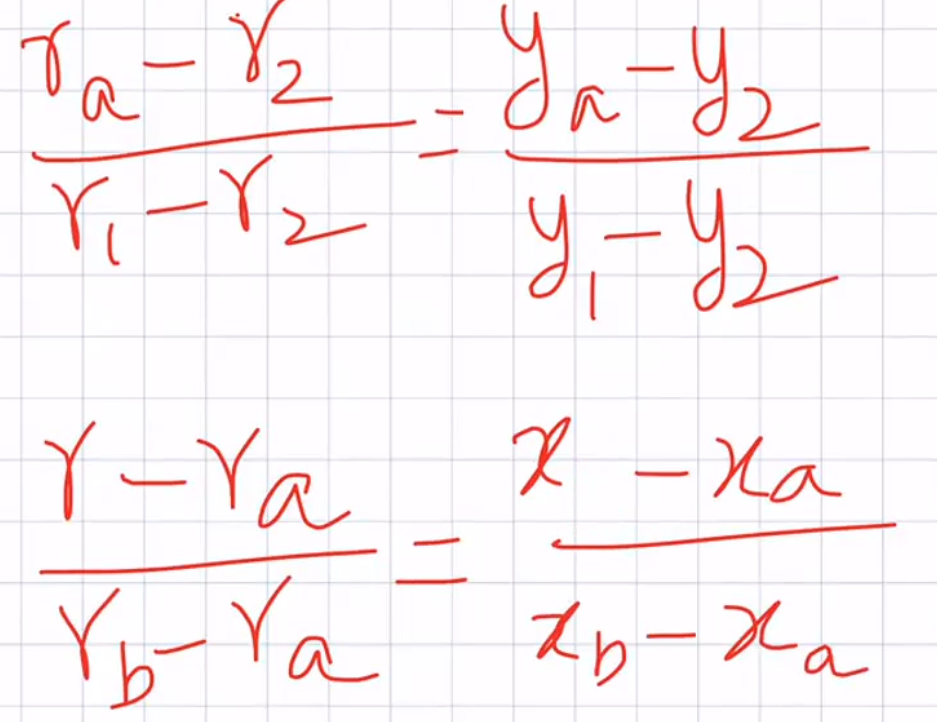
- given
Phong Smooth Shading
- in WS: illuminate each point inside poly
- in SS: interpolate across face using normals at each point
- normal vector interpolation shading
- calc intensity at each pixel
- interp normals similar to others -> norm
- more computation but looks smoother

Limitations
- similar to Gouraud, polygon silhoutte
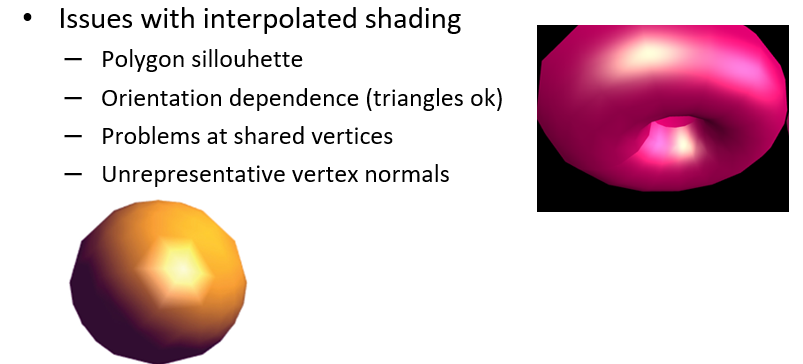
Non-Photorealistic Shading
- determine colors based on normal directions
- useful to create silhouttes
